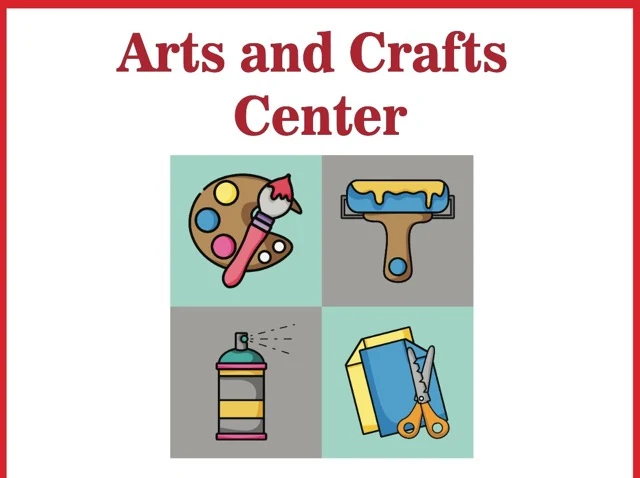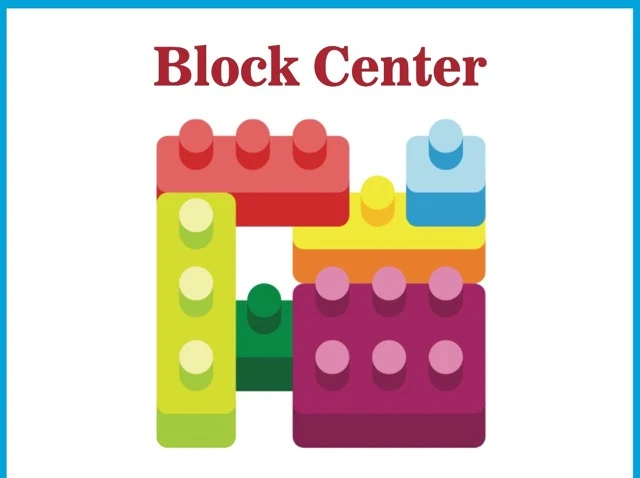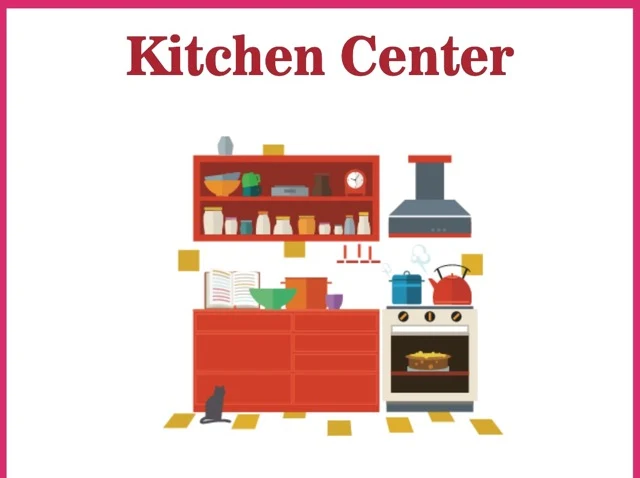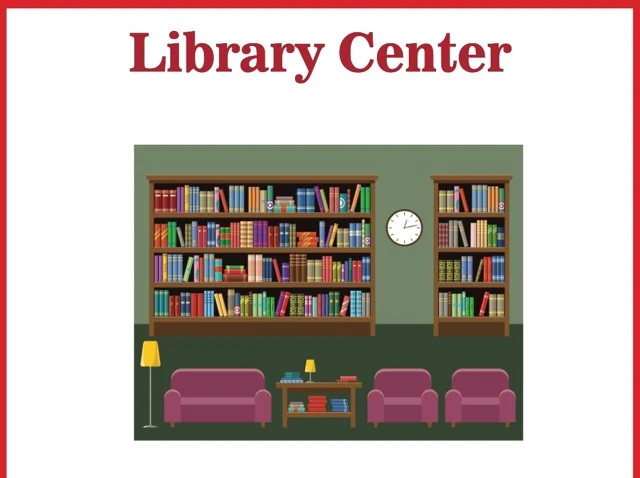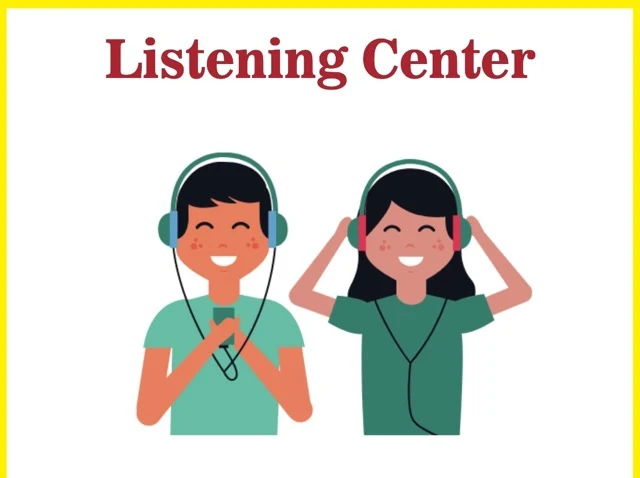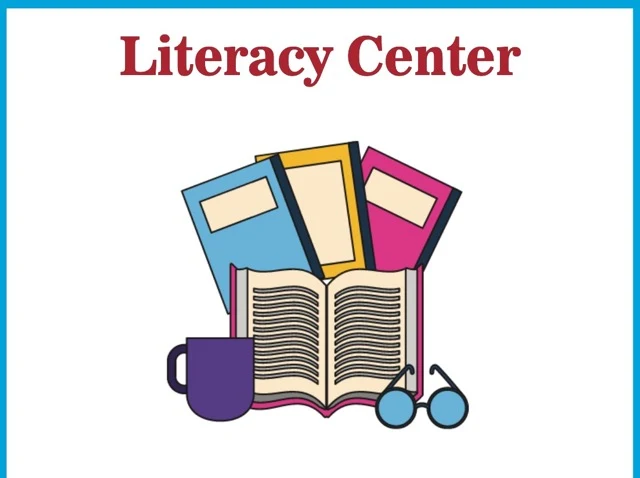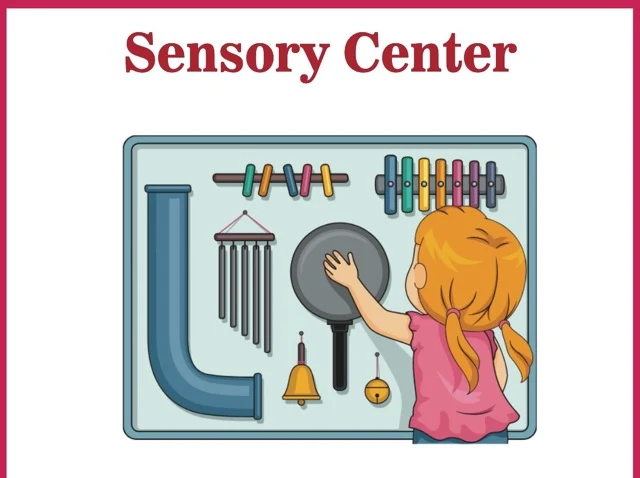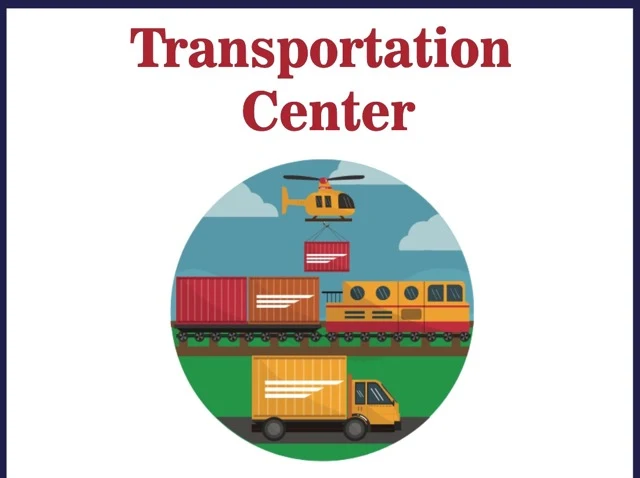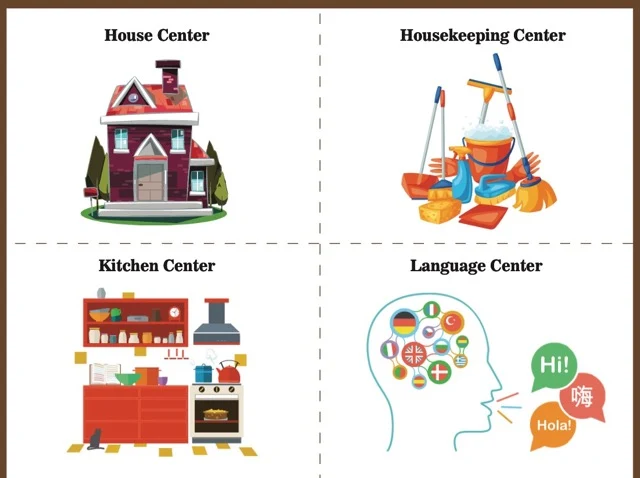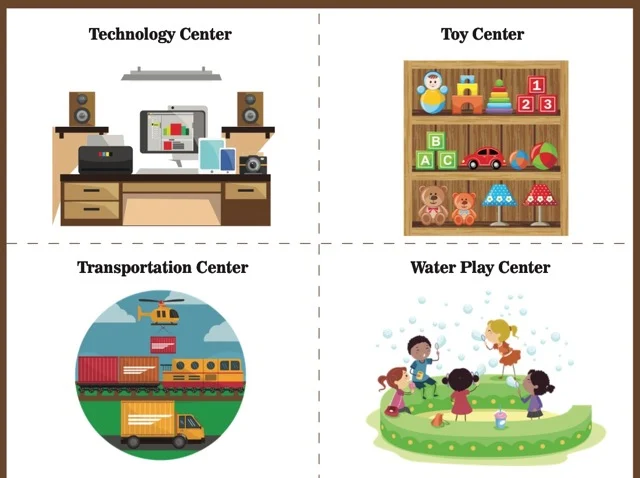Learning Centers in Early Childhood Education
Early childhood education classrooms benefit from using learning centers, which are designated areas focused on specific subjects or skills. These centers promote hands-on learning, cater to diverse learning styles, and foster essential skills. Effective implementation involves clear organization, management strategies, and adapting activities to meet individual student needs. The centers enhance engagement, encourage independence, and align with the overall curriculum. Resources such as books and technology are utilized.
Classroom Centers in Early Childhood Education
Briefing Doc: Classroom Centers in Early Childhood Education
This document summarizes key themes and ideas regarding classroom centers based on the provided excerpts from "Classroom Centers: A Comprehensive Guide," "Classroom Centers: A Guide for Educators," and "Testing Theme: Center Signs.pdf."
Core Concept: Classroom centers are designated areas within a classroom, each dedicated to a specific subject or skill, and designed for hands-on learning and exploration. They facilitate interactive engagement and cater to diverse learning styles, fostering essential skills like problem-solving, critical thinking, and socio-emotional development.
Benefits of Classroom Centers:
●
Enhanced Engagement and Motivation: Centers provide a fun and interactive learning environment, as emphasized in "Classroom Centers: A Guide for Educators," which states that centers "provide a fun and interactive way for children to learn, increasing their engagement and motivation."
●
Differentiated Instruction: Centers allow students to work at their own pace and level, addressing diverse learning needs and styles.
●
Development of Key Skills: Activities in centers promote various skills, including problem-solving, critical thinking, creativity, and social-emotional intelligence.
●
Fostering Independence and Choice: Students gain autonomy by selecting centers that interest them and managing their time.
Organization and Structure:
●
Clear Definition and Boundaries: Centers should be visually demarcated with labels, as exemplified in "Testing Theme: Center Signs.pdf," showcasing a variety of visually appealing and informative center signs.
●
Organized and Accessible Materials: Materials should be readily available and arranged for student use.
●
Appropriate Seating and Workspaces: The layout should accommodate both individual and group activities.
Types of Classroom Centers:
The resources list various common themes, including:
●
Academic Subjects: Reading, writing, math, science, social studies.
●
Fine Arts: Art, music, movement.
●
Play-Based Learning: Dramatic play, blocks, construction, sensory activities.
●
Life Skills: Cooking, housekeeping.
Materials and Resources:
Centers require a diverse range of materials, including:
●
Traditional Learning Tools: Books, manipulatives, writing supplies, art materials, construction toys, puzzles, games, and props.
●
Technology Integration: Computers, tablets, interactive whiteboards, and educational apps can enhance the learning experience.
●
Real-Life Objects: Familiar items like tools, kitchen utensils, measuring cups, and natural materials add authenticity and relevance.
Management Strategies:
Effective management is crucial for successful center operation:
●
Clear Expectations and Routines: Established rules and procedures ensure smooth functioning. "Classroom Centers: A Guide for Educators" emphasizes establishing "clear rules and procedures for using centers."
●
Rotation Schedules: Structured systems for student movement between centers ensure equitable access.
●
Time Limits: Designated timeframes maximize efficiency and focus.
●
Monitoring and Support: Teachers must actively observe student progress and provide guidance as needed.
Engaging Center Design:
Key considerations for creating stimulating and impactful centers:
●
Theme and Decor: A visually appealing and themed environment enhances interest.
●
Variety and Choice: Offering diverse activities and materials caters to individual preferences.
●
Hands-On Activities: Emphasize interactive and experiential learning.
●
Curriculum Connection: Alignment with current classroom topics strengthens relevance and understanding. "Classroom Centers: A Comprehensive Guide" highlights the importance of this alignment, stating that it "ensures that center activities reinforce and extend concepts being taught in class, creating a cohesive and meaningful learning experience."
●
Regular Updates: Refreshing materials and activities maintains novelty and sustained engagement.
Adapting to Diverse Needs:
Centers should be inclusive and cater to all learners:
●
Differentiation Strategies: Activities and materials should be adapted to accommodate varying abilities and learning styles. "Classroom Centers: A Comprehensive Guide" discusses the importance of offering "a variety of activities and materials that appeal to different learning preferences."
●
Meeting Special Needs: Specific modifications and support should be provided for students with disabilities or gifted learners.
Conclusion:
Classroom centers are a valuable instructional approach in early childhood education. They create an engaging, interactive, and differentiated learning environment that promotes skill development, independence, and a love for learning. Effective implementation requires careful planning, organization, management, and ongoing adaptation to meet the diverse needs of all learners.
Classroom Centers: A Guide for Educators
Classroom Centers FAQ
What are classroom centers?
Classroom centers are designated areas within a classroom that provide students with opportunities for hands-on learning and exploration. Each center focuses on a specific subject or skill, such as literacy, math, science, art, or dramatic play.
Why are classroom centers important?
Classroom centers offer numerous benefits for young learners:
●
Engagement and Motivation: Centers provide a fun and interactive way for children to learn, increasing their engagement and motivation.
●
Differentiated Instruction: Centers cater to various learning styles and abilities, allowing students to work at their own pace and level.
●
Skill Development: Centers support the development of essential skills, such as problem-solving, critical thinking, creativity, and social-emotional learning.
●
Independence and Choice: Centers foster independence as students make choices about their learning and manage their time.
What types of classroom centers are there?
Common classroom center themes include:
●
Academic Subjects: Reading, Writing, Math, Science, Social Studies
●
Fine Arts: Art, Music, and Movement
●
Play-Based Learning: Dramatic Play, Blocks, Construction, Sensory
●
Life Skills: Cooking, House Keeping
How are classroom centers organized?
Centers should be clearly defined with visual labels and boundaries. Materials and resources should be organized and accessible to students. Seating and workspaces should be arranged to accommodate individual and group activities.
What materials are needed for classroom centers?
The materials needed for each center will vary depending on the theme. Common materials include:
●
Books, manipulatives, writing supplies, art materials, construction toys, puzzles, games, and props
●
Technology: Computers, tablets, interactive whiteboards
●
Real-life objects: Tools, kitchen utensils, measuring cups, and natural materials
How should students use classroom centers?
Students can use centers during independent work time, small group activities, or teacher-led instruction. They should be encouraged to choose centers that interest them and to work collaboratively with their peers.
How can teachers manage classroom centers effectively?
Effective management strategies include:
●
Clear expectations and routines: Establish clear rules and procedures for using centers.
●
Rotation schedules: Create a system for students to rotate through centers.
●
Center time limits: Set a specific amount of time for students to spend at each center.
●
Monitoring and support: Actively monitor student progress and provide support as needed.
What are some tips for creating engaging classroom centers?
To make centers engaging:
●
Theme and Decor: Create a visually appealing and stimulating environment.
●
Variety and Choice: Offer a variety of activities and materials to choose from.
●
Hands-on Activities: Focus on hands-on, interactive learning experiences.
●
Connection to Curriculum: Align center activities with current curriculum themes.
●
Regular Updates: Refresh centers regularly with new materials and activities.
Classroom Centers: A Comprehensive Guide
Classroom Centers: A Deep Dive
Short-Answer Quiz
Instructions: Answer each question in 2-3 sentences.
1.
What is the primary purpose of classroom centers?
2.
Identify three benefits of incorporating classroom centers into your teaching practice.
3.
Describe the key elements necessary for the effective organization of a classroom center.
4.
List five different themes commonly used for classroom centers.
5.
Explain how technology can be integrated into classroom centers.
6.
What are two strategies for managing student behavior and workflow within classroom centers?
7.
How can a teacher ensure that classroom centers cater to diverse learning styles?
8.
Describe the role of visual aids and labeling in a well-structured classroom center.
9.
Why is it important to align classroom center activities with the current curriculum?
10.
How can teachers promote collaboration and peer interaction within classroom centers?
Answer Key
1.
Classroom centers provide designated areas within a classroom for hands-on learning and exploration, allowing students to engage with specific subjects or skills in an interactive manner.
2.
Centers increase engagement and motivation, cater to diverse learning styles and abilities, and support the development of essential skills like problem-solving, critical thinking, and social-emotional learning.
3.
Effective organization involves clear visual labels and boundaries, organized and accessible materials, and seating arrangements that accommodate both individual and group activities.
4.
Five common themes include literacy, math, science, art, and dramatic play.
5.
Technology can be integrated through the use of computers, tablets, interactive whiteboards, and educational apps, enhancing interactive learning experiences.
6.
Establish clear expectations and routines, including rules and procedures for using centers, and create rotation schedules to ensure equitable access for all students.
7.
Offer a variety of activities and materials that appeal to different learning preferences, such as visual, auditory, kinesthetic, and tactile learners.
8.
Visual aids like posters, charts, and labels help clarify center themes, provide instructions, and create a structured and stimulating learning environment.
9.
Alignment with the curriculum ensures that center activities reinforce and extend concepts being taught in class, creating a cohesive and meaningful learning experience.
10.
Encourage group projects, collaborative games, and peer-to-peer teaching opportunities within centers, fostering teamwork and communication skills.
Essay Questions
1.
Discuss the advantages and disadvantages of using classroom centers as a primary instructional method. Consider factors such as student independence, teacher workload, and assessment challenges.
2.
Analyze the role of play-based learning in early childhood education, specifically focusing on how classroom centers can facilitate exploration, creativity, and social-emotional development.
3.
Evaluate the effectiveness of different management strategies for classroom centers, taking into account student age, classroom size, and available resources.
4.
Design a thematic classroom center focusing on a specific subject area. Describe the layout, materials, activities, and assessment methods you would incorporate to create an engaging and educational experience.
5.
Explain how classroom centers can be adapted to meet the needs of students with diverse learning needs, including those with disabilities and gifted learners. Provide specific examples and strategies for differentiation.
Glossary of Key Terms
●
Classroom Centers: Designated areas within a classroom that provide students with opportunities for hands-on learning and exploration, each focusing on a specific subject or skill.
●
Differentiated Instruction: Tailoring instruction to meet the individual needs of diverse learners, considering their learning styles, abilities, and interests.
●
Engagement: The level of student involvement and attention during learning activities.
●
Hands-On Learning: Active learning experiences where students directly manipulate materials and engage in practical tasks.
●
Interactive Learning: Engaging students through active participation, collaboration, and the use of technology and multimedia.
●
Manipulatives: Physical objects used as teaching tools to help students visualize and understand abstract concepts.
●
Rotation Schedule: A system for students to move through different classroom centers in a structured manner.
●
Thematic Learning: Integrating various subject areas around a central theme to provide a more holistic and engaging learning experience.
●
Visual Aids: Charts, posters, diagrams, and other visual materials used to enhance instruction and clarify information.
●
Workspaces: Designated areas within a classroom center where students can work individually or in groups.

